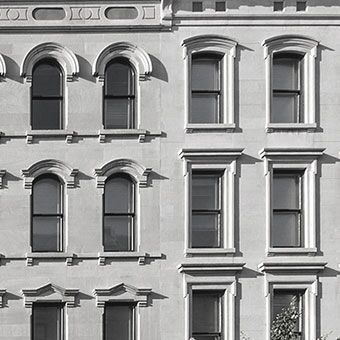The real estate trades have been abuzz with stories of unprecedented valuation declines for office assets and the resulting office building loan defaults and foreclosures among even the bluest of blue-chip borrowers. Given the 500-basis-point surge in interest rates that began with the first fed funds rate increase in March 2022, combined with the credit crunch precipitated by the regional bank crisis in March 2023, it’s prudent, if not worrisome, to ask now: Will the hotel market suffer the same kind of distress?
The good news for hotel investors is that fundamentals remain strong in the hospitality industry and hotel owners are not facing the once-in-a-lifetime underwriting sea change that work-from-home has created for office investors. Nearly every hospitality market in the U.S. is performing above 2019 levels; many, in fact, are at historical highs and profitability has recovered, even outpacing inflation in many instances.
The bad news is that the property financing market has rarely been more challenging; the difficulties created by higher interest
rates and persistent lending constraints will still result in genuine distress for many hotel owners, particularly those that are required to fund significant capital improvements, were overleveraged going into the pandemic or, perhaps worse, cross-collateralized their loans or saw their balance sheets weakened during COVID.
CAPEX CONUNDRUM
The dirty secret in the hospitality industry is that the 4% to 5% replacement reserve that is the standard for hotel underwriting is not nearly sufficient to cover the periodic capital programs mandated by the brands. For the past 30 years, steadily declining interest rates and improved financing technology (shout out to the early pioneers in the CMBS industry) allowed hotel owners to cover most of their capital improvement program funding shortfalls through refinancings. Today, however, owners are being squeezed between two powerful forces. First, rising interest rates make it difficult to borrow additional funds for refurbishment. Second, the accommodations made by franchisors and lenders that allowed owners to defer capital expenditures and to raid their FF&E replacement reserve accounts to cover operating shortfalls and debt service are now being unwound. The brands are insisting that owners upgrade their properties and banks are requiring that replacement reserves be replenished. Meeting the dual demands of their brands and lenders would be a herculean endeavor at the best of times. These are not those.
CROSS-COLLATERALIZATION BLUES
The siren call of the cross-collateralized SASB loan, with its sweet promise of more proceeds, cost-saving efficiency and better pricing, ensnared many portfolio owners. Today, several of the larger defaults and bankruptcies in the hotel industry are the result of the inflexibility of these crossed loans and the frustration of situations where stronger assets in pools with real equity are being pulled into default/foreclosure by a relatively small number of weak properties.
In our higher-interest-cost environment, the cost of splitting up these portfolios, whether it is the release premium associated with pulling an individual asset out of the pool or prepayment premiums, handcuffs many owners and, as a result, many of these portfolios are not financeable and will end up on the trading block either in sales directly administered by lenders or in consensual workout’s/pre-packaged bankruptcies with the lender looking over the borrower’s shoulder.
OLD-FASHIONED OVERLEVERAGE
Yup, it still exists. More importantly, chances are good that if you entered the pandemic heavily levered (i.e., greater than 75% leverage) then you came out of the pandemic even more heavily levered because of the interest deferrals and other costs that you incurred. Moreover, you probably hit your balance sheet pretty hard to help cover debt service shortfalls during the pandemic.
There is an old mortgage banker’s adage during difficult moments in the capital markets that goes something like this: “Your best lender is usually your existing lender.” We are seeing relatively few defaults/foreclosures with higher-leverage, single-asset loans, particularly where the lender is a balance sheet lender (e.g., bank, life company, debt fund, etc.). For the most part, lenders are choosing to restructure loans and accept principal paydowns, larger interest reserves, additional fees and/or top-up guarantees rather than add to their REO exposure. Those kinds of accommodations are usually only possible after a borrower has failed in their effort to refinance with a new, arms-length lender.
There is also a deep market for recapitalization equity, with private investors led by a handful of large, organized family offices, such as BDT/MSD, USB, Morgan Stanley and JRE, seeking preferred equity opportunities where they can write $7 million to $15 million checks and achieve 16% to 22% IRRs.
Though rising interest rates do translate into lower asset valuations and necessarily put stress on capital stacks, the underlying assets in hospitality for the most part are not distressed. Additionally, both the brands and entrepreneurs in the industry continue to develop and offer inventive, value-add platforms that are appealing to investors, guests and host communities for economic development.





